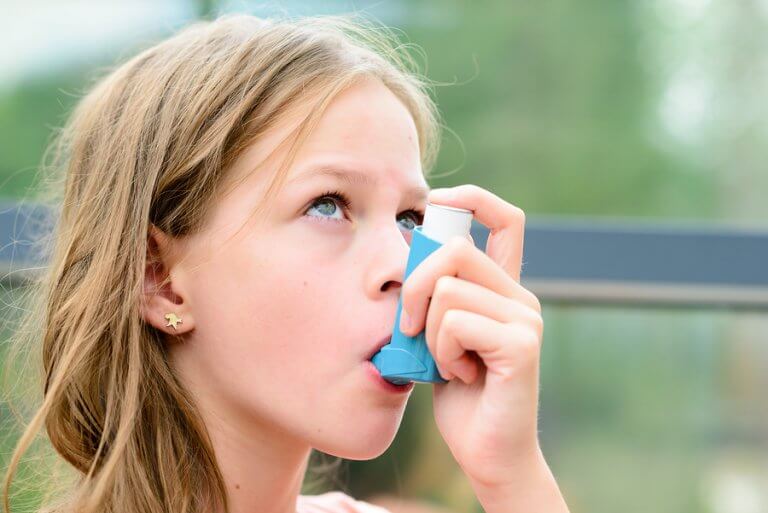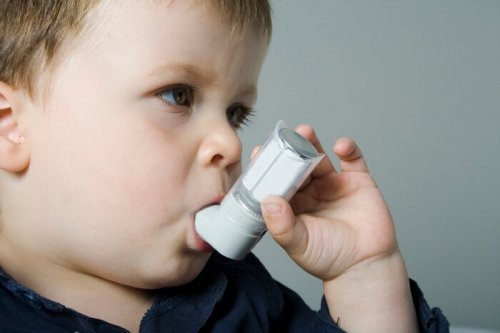School and Asthma: What You Should Know


Reviewed and approved by the psychologist María Alejandra Castro Arbeláez
Currently, teachers and principals are up to date on many common childhood illnesses and know how to respond to them. School and asthma can go hand in hand, as long as the educational community is informed and supportive.
School and asthma: are they compatible?
Many parents whose children have asthma fear for their children’s health when they’re separated, such as while they’re at school.
Asthma attacks are one of the leading reasons students miss school. However, when the illness is well controlled it shouldn’t be a reason to be absent.
Parents and school
The first step to take is to talk with your doctor to make a plan of action for an attack. This way the adult in charge (for example, the teacher) will know what is medically necessary for the child to take, in what dose, and how often.
A copy of this plan should be given to the school administration and to the teachers in charge of your child. This way they’ll be able to act quickly to avoid any dangerous consequences for your student.

You should also talk to them about what the triggers are for asthma and what they can do to avoid and reduce them. These include the accumulation of dust suspended in the air (poor ventilation), animal hair, and strong cleaning products.
Classrooms need to have air conditioning or dehumidifiers and of course the environment should be free of smoke.
Managing an asthma attack at school
It may be that all this preparation for an asthma attack won’t have to be put into practice at any point during the year. However, just in case, a plan should be in place.
As a first measure, your child should carry an inhaler or rapid relief medicine that will instantaneously open the lungs. You can also give one to the teacher that can be kept in a safe place at school or with the school nurse.
When children are old enough and used to enacting the treatment, it’s important to let them do it.
This way they won’t be dependent on others if they have an attack somewhere isolated. The teacher can also stay beside them to help if needed, or at least to be a calming presence to recover more quickly.

School and asthma: 10 action steps
Unfortunately, there are more school-age kids with asthma every day. As a result, many teachers and principals need to be ready to take care of them in a crisis.
Some schools use what is known as the “10 commandments of a healthy school for asthmatic children.” The rules are as follows:
- Be tobacco free (even in teachers’ lounges and areas off-limits to children).
- Have an employee in charge of taking care of asthmatic children.
- Have a first aid kit that includes inhalers and other medication.
- Allow students to carry their own medication and take it as necessary.
- Identify asthmatic children.
- Establish an action plan for an asthmatic crisis.
- Guarantee the level of hygiene and air quality.
- Provide special activities in gym class for asthmatic children.
- Create classrooms with minimal allergens and triggers.
- Take measures to reduce the effects of pollen.
Without a doubt, school and asthma can coexist if everyone commits to acting for the safety and health of children.
Currently, teachers and principals are up to date on many common childhood illnesses and know how to respond to them. School and asthma can go hand in hand, as long as the educational community is informed and supportive.
School and asthma: are they compatible?
Many parents whose children have asthma fear for their children’s health when they’re separated, such as while they’re at school.
Asthma attacks are one of the leading reasons students miss school. However, when the illness is well controlled it shouldn’t be a reason to be absent.
Parents and school
The first step to take is to talk with your doctor to make a plan of action for an attack. This way the adult in charge (for example, the teacher) will know what is medically necessary for the child to take, in what dose, and how often.
A copy of this plan should be given to the school administration and to the teachers in charge of your child. This way they’ll be able to act quickly to avoid any dangerous consequences for your student.

You should also talk to them about what the triggers are for asthma and what they can do to avoid and reduce them. These include the accumulation of dust suspended in the air (poor ventilation), animal hair, and strong cleaning products.
Classrooms need to have air conditioning or dehumidifiers and of course the environment should be free of smoke.
Managing an asthma attack at school
It may be that all this preparation for an asthma attack won’t have to be put into practice at any point during the year. However, just in case, a plan should be in place.
As a first measure, your child should carry an inhaler or rapid relief medicine that will instantaneously open the lungs. You can also give one to the teacher that can be kept in a safe place at school or with the school nurse.
When children are old enough and used to enacting the treatment, it’s important to let them do it.
This way they won’t be dependent on others if they have an attack somewhere isolated. The teacher can also stay beside them to help if needed, or at least to be a calming presence to recover more quickly.

School and asthma: 10 action steps
Unfortunately, there are more school-age kids with asthma every day. As a result, many teachers and principals need to be ready to take care of them in a crisis.
Some schools use what is known as the “10 commandments of a healthy school for asthmatic children.” The rules are as follows:
- Be tobacco free (even in teachers’ lounges and areas off-limits to children).
- Have an employee in charge of taking care of asthmatic children.
- Have a first aid kit that includes inhalers and other medication.
- Allow students to carry their own medication and take it as necessary.
- Identify asthmatic children.
- Establish an action plan for an asthmatic crisis.
- Guarantee the level of hygiene and air quality.
- Provide special activities in gym class for asthmatic children.
- Create classrooms with minimal allergens and triggers.
- Take measures to reduce the effects of pollen.
Without a doubt, school and asthma can coexist if everyone commits to acting for the safety and health of children.
All cited sources were thoroughly reviewed by our team to ensure their quality, reliability, currency, and validity. The bibliography of this article was considered reliable and of academic or scientific accuracy.
- Aguarón Pérez J et al. (2009). Gema 2009. Guía española para el manejo del asma. Área de Asma SEPAR. https://doi.org/10.1016/S0300-2896(15)32812-X
- Tabalipa, F. D. O., & Da Silva, J. (2012). Asma. Revista Brasileira de Medicina.
This text is provided for informational purposes only and does not replace consultation with a professional. If in doubt, consult your specialist.








